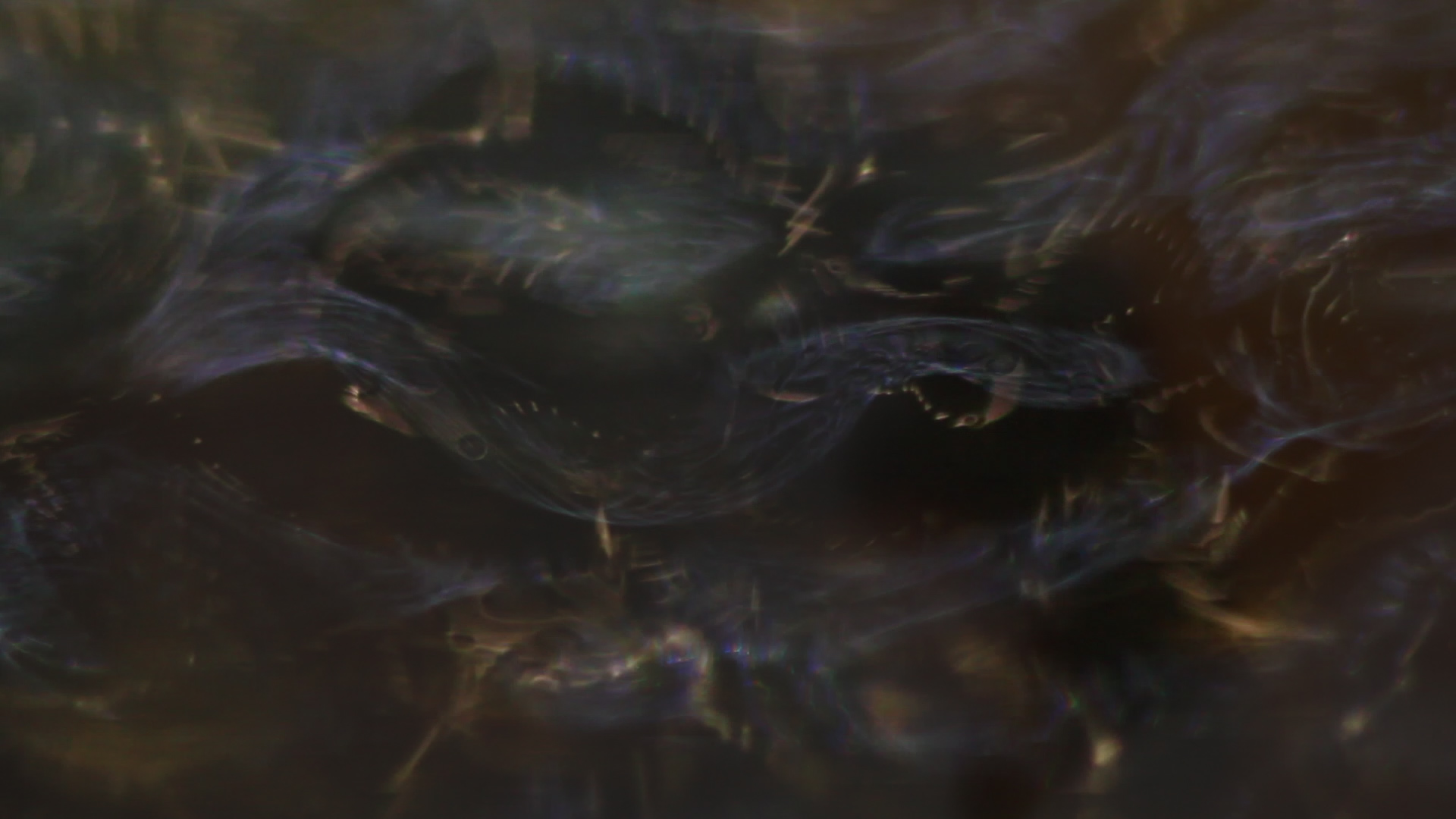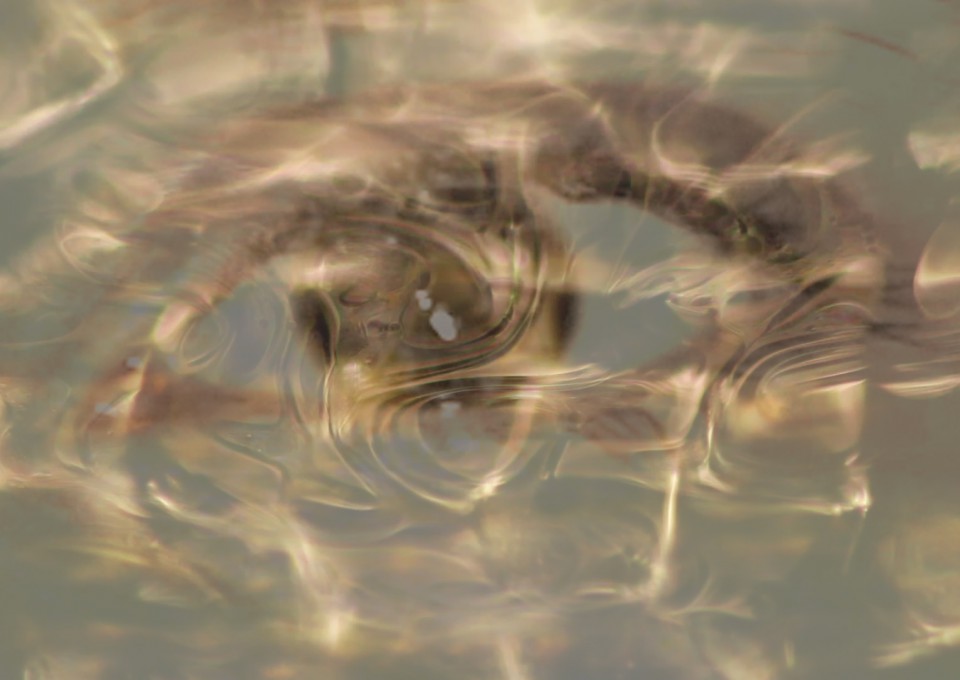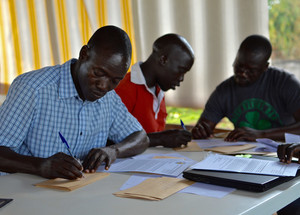Oakland-based composer and intermedia artist Marielle V. Jakobsons creates immersive soundscapes, steeped in minimalism. She also makes instruments and installations which explore the intersection of sound, light and movement. We spoke with her about the genesis of her work, her experience of art as community, and creating works that communicate across mediums.
At what point in your life did it become clear to you that music would become central?
I think that actually happened very early. I started playing the violin when I was four and studied it quite seriously from a really early age. It’s funny, I was actually hanging out with my parents a couple of weeks ago while on tour. We met up, and they brought some of my old belongings from when I was child. And of course, you write a little essay about what do you imagine yourself in the future and without a doubt violinist was always on that list, among other things. I definitely had a strong focus towards music from a young age. It took a winding path to get to where I am today, in a lot of ways, but in other ways it felt like the most natural thing to do.
Were there any key musical figures or transitional moments for you when you were young?
I would have to say that as a youngster I was very surrounded by that kind of classical music culture, like virtuosos, violinists. I had the great honour of growing up in Cleveland, which has an amazing orchestra, and symphony hall, and my teacher when I was fairly young was in the Cleveland Orchestra. So we would get tickets to go there all the time, and the sonic experience of being in the orchestra hall and listening to symphonies is something that kind of reminds me of noise shows where you feel the music inside your body because it’s vibrating so heavily.
There’s no substitute for it.
There is no substitute for it and there is something about that immersive quality of being right within a symphony. I mean performing in one could do that as well, but really going to those performances as a youngster was really formative for me. I think the fact of occupying a space that is filled with music, there is something really unique about that.
Could you speak about the ways that art or music can act as connecting or unifying forces in your life and those around you?
I can think of a few different ways of approaching that. One way is kind of more literally in supporting communities, where people have a purpose to gather together, and that is to experience a certain type of music or art. I do think that the experiences that can be created within those communities, and the support of those communities, is something that can transcend an individual. So I feel like when I moved to the Bay Area in 2004, I started at Mills College and I also just started getting into the Bay Area music scene which was incredibly vibrant. There were improvised music shows, there were noise shows; there were several different music communities that I dove into and felt very inspired by. What I ended up creating was very much a product of the communities that I had access to and I was within, the conversations that I had, other people’s art that I experienced with other people… so I think these communities can help us towards unifying goals and experiences which we wouldn’t necessarily imagine on our own.
Your music has a kind of healing quality. Is there anything you want to say or share about therapeutic applications of music? Has your music been used in a therapeutic context?
Well, if you ask my dog Bubbles (laughs), she would very specifically say, “Yes, this is good healing music.” Going back to my band Date Palms as well, I had Bubbles as a puppy when we started Date Palms and she was a kind of wild child. She has very specific tastes in music, and certain types of music just couldn’t be played around her, and then there were other types of music, which happened to be meditative, that would just slow her down and she would sit and enjoy it. She would come up to the bass – she really loved the basses and the tanpura. Once we were recording tanpura and she just came up and started licking it (laughs). You know, humour aside, I find my own personal enjoyment of the music I am making has a certain purpose in my life which follows along with other practices that I try to include in my daily life that are grounded and calming and meditative. That focus on connecting to the physical world around us, which is something that I think minimalist music can do, for me I feel that that is healing and therapeutic. And not necessarily in a prescribed way. I’ve often actually thought about going into music therapy or taking a couple of classes here or there. I am thinking about, what kinds of experiences do I want to bring out in the world around me?
There is a sense of a kind of reverence informing your work, of the mystical or sacred, and like all great music it feels like it kind of transcends tradition.
That’s a lovely compliment, thank you for that. Those words are close to my heart and intention in a lot of ways.
The music speaks for itself in so many ways, it’s always tricky to then bring it into the verbal mind. It’s always a step removed to even talk about it.
I think I could bring in the aspect of the visuals that I’m working with… I am transforming music of sound into the movement of water and light. To me that has a lot of transcendent qualities about it and is a sacred kind of offering. Every time I go to use my instrument I feel like I am communicating with something outside of myself in the physical world. It’s a pretty amazing feeling to have and I think bringing in that visual element allows the experience of the music to become more immersive, widening your perception and your sense of space and place in the world.
When you refer to the instrument (seen above), is that an experience that is unique to that instrument?
I’ve been building different instruments for a while now, about a decade. The first instrument that I built was a self-oscillating violin. It was self-resonating through its strings using electro magnetism, and you would see this violin just sounding on its own; nothing is touching the strings but there was acoustic sound through the body and the strings. And so that sense of magic and wonder and the unexpected, it was never the same when you looked at it. So I think for me creating instruments that seem to have a life of their own is something that really interests me and I’ve been fascinated by. I called it a breathing system (laughs).
When did you complete this recent instrument?
Just this past spring I built this latest version of it which is clear, and allows the light to reflect from underneath it and around the sound board. I’ve been furiously creating those videos that you’ve seen since the evolution of this newest instrument. The videos that I’m performing with, half of them are created with the previous version of the instrument which was carved out of wood and has very different visual qualities in its response. That one was built in 2014.
Gallery

When I was young, I remember responding to learning about about mortality by thinking how I needed to make or be part of something that would last beyond my mere short lifetime. Creating music for me was a portal to a realm of pure feeling; like you described, it kind of became an inevitability for me. Do you have a sense of creating a legacy with what you’re doing with your work?
That’s an interesting question that doesn’t often come up! I do think that especially as a youngster there was this feeling of immediacy and the necessity to be great… not just great, let’s say exceptional (laughs), a little bit of an overachiever complex – to be recognised for that was very important. Imagine coming from that classical music world where, if you’re a young genius you’re on the track and that’s where you’re going, and you have to stand out amongst everyone else. As I continued to grow older [my work] reflected that immediacy, that sense of mortality. I was always looking forward to: What do I need to do next? To become even better? Rather than necessarily focussing on the moment and what it is that you are creating in the moment that you are creating it. And so I think that has been a shift in how I think about my artwork, and also mortality. The legacy that I am creating may come to a close at any point in time, we have no idea about that, and I have no control over that… I do feel that my artistic practice is a form of meditation for me, in the focus of the now. Whereas I might have goals for my art, and what I want to accomplish next year, I feel like the day to day is much more focussed on that type of meditation.




